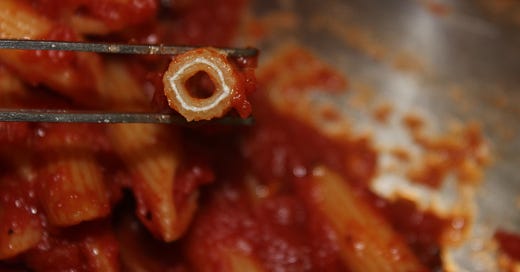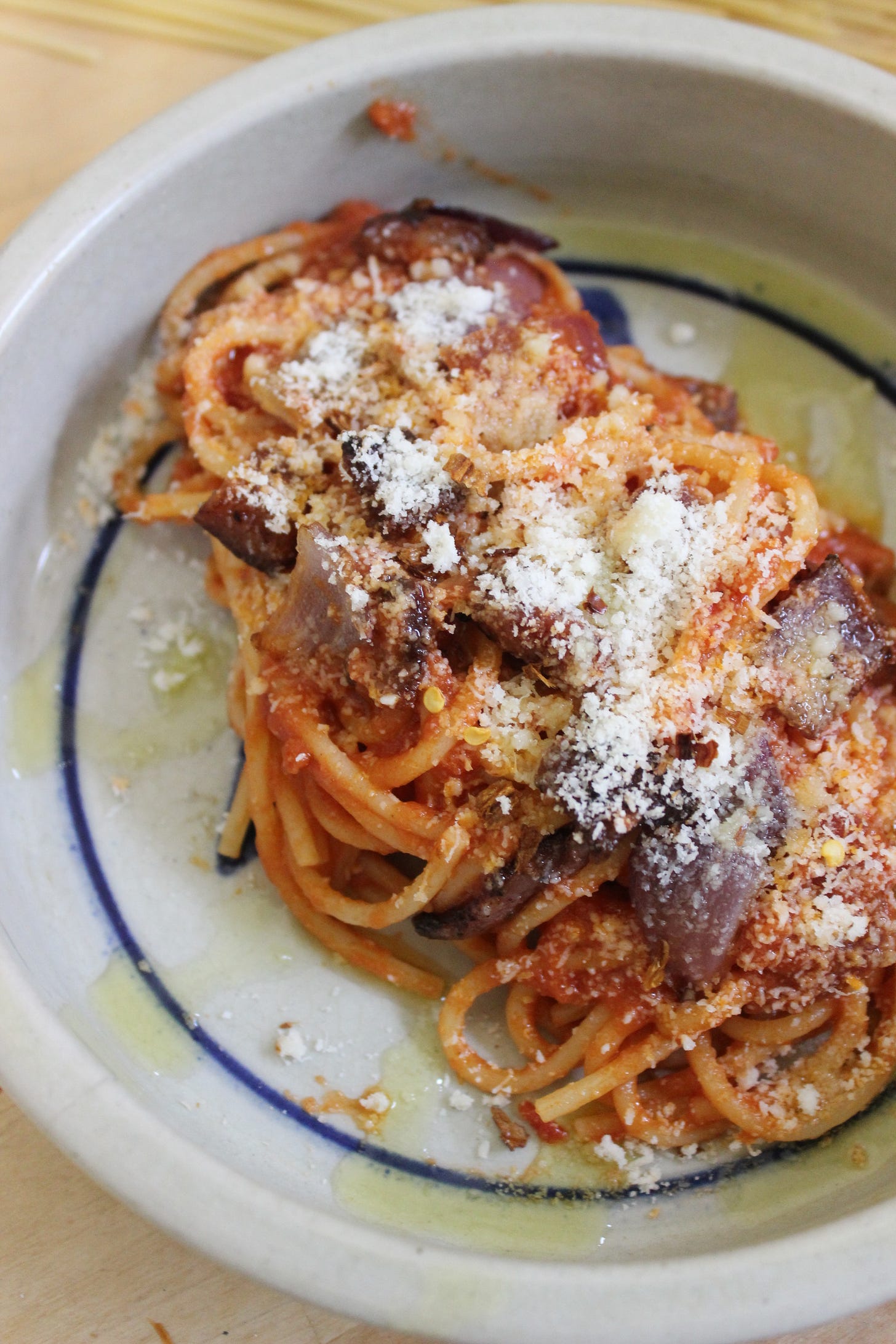Stay up to date with everything that’s going on with Cittavino: events; tastings (including virtual!); and holiday gifts (there is a Panettone presale happening next Friday! Rustichella from Abruzzo and Fiasconaro from Sicily for silly prices).
What is '“traditional” will always be a topic of discussion for us Italophiles here, especially those of us who study the cuisine with a chef’s intention to always improve and expound. Traditionally, there is no onion in this dish. Though you will find that even in the cookbooks of the greats, like Marcella Hazan, onion is added without any side notes. Alison Roman has since decided she prefers the dish without. By now it should be no surprise that everyone does indeed have their own way of making the dish. Though widely accepted as NOT TRADITIONAL, personally I prefer the onion. If I admitted this within a 7km radius of Amatrice, where this pasta is from, I would be crucified in the papers, like this poor chef who confessed he lets a garlic clove simmer in the oil. Despite following with the fact that he removes the garlic, he is now branded as the village idiot. Italians are ruthless.
Since then, the city of Amatrice has posted the codified recipe on the official government website.
If you want to make the traditional version, all you need to do is omit the tomato paste and onion. I use the tomato paste because I am nostalgic for my Lupa Osteria Romana days in NYC, and because I love a tomato sauce that is thick and coats every noodle like jam.
Lastly, Bucatini, the hollow noodle, is according to the City of Amatrice government website, MANDATORY! but we won’t tell if you choose to use penne, rigatoni, or maybe even a mezze maniche. Brand we love: Rustichella; Martelli; Macini.
What is “al dente” and how the f*%k do I do it?
Once again, there is a range. I once ate a homemade risotto made by an Italian and everyone, like 10 people, were going on and on about how perfectly al dente it was and I was the loner in the corner thinking it was just plain uncooked. I have also met Italians who do not like al dente (yes they exist! But in secret, shhh…). For me, al dente means the pasta is maybe 2min undercooked. Unfortunately, the cook time will vary upon pasta shape and brand, so finding out what is your preferred al dente will take some patience and dedication. I suggest tasting the pasta at various stages of cooking it: bite into it and look at the uncooked ring (if biting into a circular noodle). That interior ring will get smaller in thickness as the pasta continues to cook. The picture below is about 1min from being perfect for my taste. I give you check points in the recipe to check for al dente.
other notes: This is a saucey recipe. I love sauce and having extra in the pan is kind of a must (especially if I’m cooking for my sister, hi Carla!)
I used a copper bottom stainless steel pan and cook times are based on this material. Cast iron gets hot! and your cook times will likely shorten in this recipe. Just keep your eye on it.
It’s hard to make these pastas in large quantities. The most difficult part being cooking the guanciale so every piece gets perfectly crispy and finding a pan large enough that would fit more than two portions of pasta. You will have to sacrifice some precision, but the dish will still taste amazing.
Keep reading with a 7-day free trial
Subscribe to Cittavino & Co. to keep reading this post and get 7 days of free access to the full post archives.






